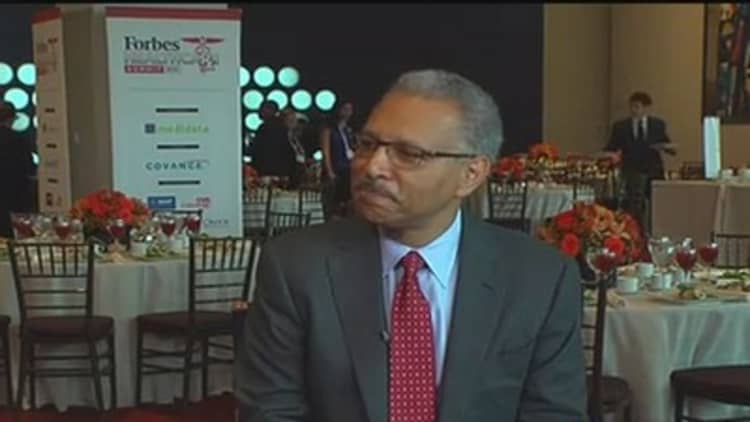Health insurance premiums at large employers rose an average 3.3 percent this year—the lowest rate in a decade—but are expected to increase much more next year, according to an analysis released Thursday.
It also found that though premium inflation had slowed significantly, the average cost to employees for out-of-pocket expenses spiked by nearly 13 percent, continuing a trend that has seen employees' share of total health-care costs jump 150 percent since 2004.
Aon Hewitt, which conducted the survey of 516 large American employers, found that nearly 30 percent of them plan to move into a private health exchange over the next three to five years to help control health-care costs for workers as well as offer them more choice.
(Read more: Sign of things to come? IBM, Time benefits changes)

Private exchanges offer workers a number of options, at different premium and out-of-pocket price points, in contrast to traditional company plans with just one or two selections.
The 3.3 percent bump that Aon Hewitt found in its analysis compares with a 4.9 percent rise last year and a 8.5 percent hike in 2011.
(Read more: Vast majority of Obamacare exchange visitors don't enroll)
The average health-care premium per worker at larger companies was $10,471 in 2013, versus $10,131 last year.
Employees on average contributed $2,303 toward those premiums this year, compared to $2,220 last year, according to Aon Hewitt, the global talent, retirement and health solutions arm of Aon.
"There are many factors that contributed to the lower rate of premium increases we saw over the past two years that we don't expect to continue in the long term," said Tim Nimmer, Aon Hewitt's chief health care actuary.
"These include the lagged effect from the economic recession on health-care spending and continued adjustments as employers and insurers phase out the conservatism that was reflected in earlier premiums due to uncertainty around economic conditions and health-care reform," he said.
"Additionally, employers and insurers will now be subject to new transitional reinsurance fees and health-insurance industry fees," Nimmer said.
As a result of those and other factors, Aon Hewitt projects that the average premium will jump 6 percent to 7 percent in 2014.
(Read more: Aetna CEO says "so much wrong" with Obamacare insurance exchanges)
Average out-of-pocket costs for workers, which included deductibles, co-payments and co-insurance, were $2,239 this year—12.8 percent more than last year's average of $1,984, according to the analysis. Out-of-pocket costs rose just 6.2 percent last year from 2011. Aon Hewitt projects that they will increase to an average of $2,470 per employee next year.
(Read more: On health-care fraud, US is pennywise, pound foolish)
Aon Hewitt said 47 percent of companies have increased their employees' deductibles or co-pays in the past year; another 43 percent are considering doing so within the next three to five years.
Employees' share of total health-care costs—which include contributions to premiums and out-of-pocket costs—has risen from an average of $2,011 in 2004 to $4,969 forecast for next year.
—By CNBC's Dan Mangan. Follow him on Twitter @_DanMangan.


